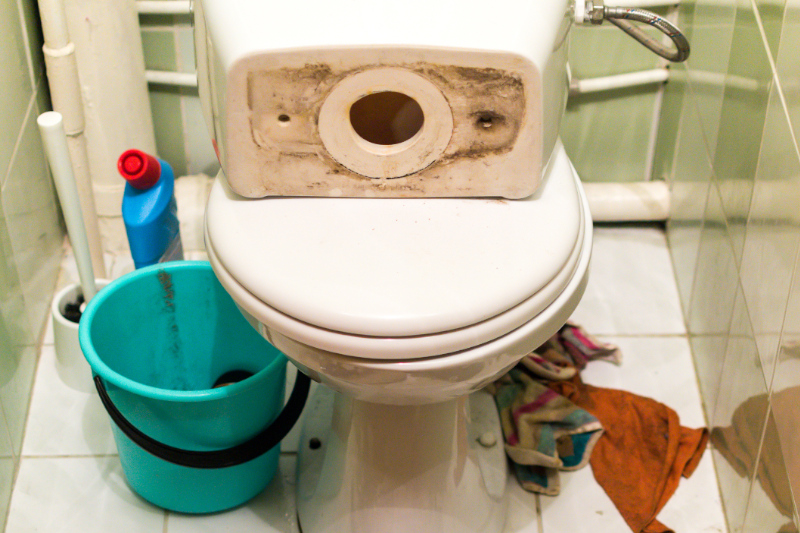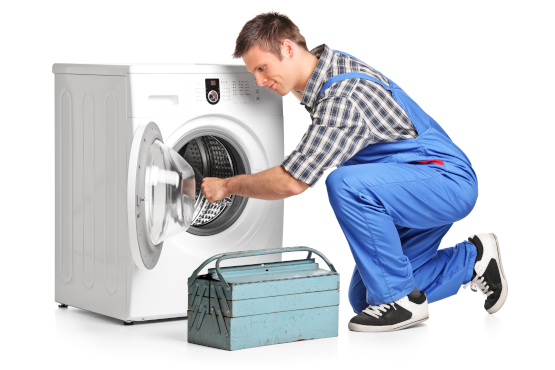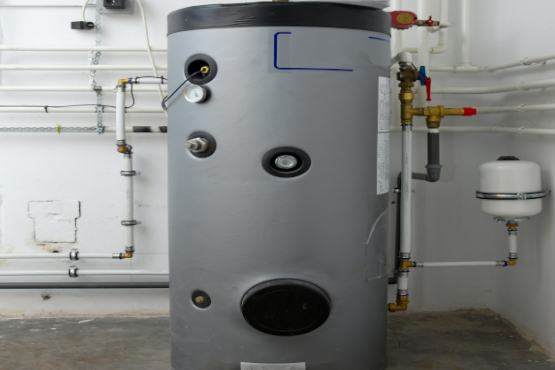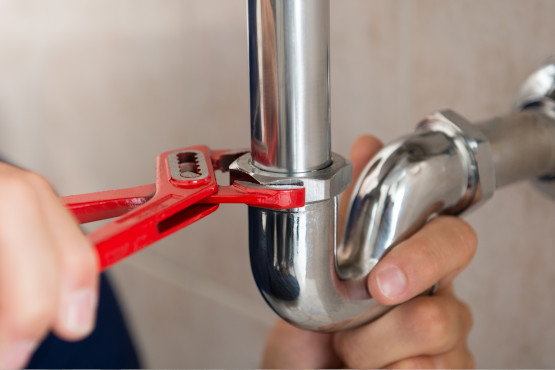Leaking Toilet Repair Richmond, TW9, TW10
If you’re dealing with a leaking toilet in Richmond, TW9, TW10, it’s essential to act fast. Common issues include worn flapper valves, faulty fill valves, and loose seals. Look for signs like constant running water, pooling at the base, or unexpected spikes in your water bill. Using the right tools, you can perform basic repairs; however, persistent issues may require a professional's expertise. Discover more on how to effectively manage leaks and maintain your toilet's efficiency.
Key insights
- Professional plumbing services in Richmond, TW9, TW10 offer same-day or next-day appointments for urgent toilet leak repairs.
- Trained technicians can diagnose issues and complete most repairs within 1.5 to 2.5 hours.
- Regular maintenance checks help detect leaks early, preventing costly water damage and repairs.
- Emergency services are available 7 days a week, ensuring quick restoration of toilet functionality.
- Fixed pricing starts at £90 + VAT, with no hidden costs, and includes a 12-month guarantee on all work.
Understanding the Anatomy of a Toilet

Understanding the anatomy of a toilet is essential for identifying and addressing leaks effectively. A standard toilet consists of several key components: the bowl, cistern, flush valve, fill valve, and flapper or flush ball. The cistern holds water used for toilet flushing and connects to the bowl via a flush pipe. The fill valve regulates the water entry into the cistern. When you activate the flush mechanism, it opens the flush valve, allowing water to flow from the cistern into the bowl. The flapper or flush ball seals the flush valve opening and lifts during flushing to permit water flow, then reseals to stop it. Pay close attention to common leak points, including the flapper, fill valve, and water seals around the toilet base.
Common Causes of Toilet Leaks
When a toilet starts leaking, it can be frustrating and costly if not addressed promptly. Common causes of toilet leaks often include worn or damaged flapper valves, leading to continuous water flow during toilet flushing. Cracked or loose seals, such as wax rings or flange gaskets, allow water to seep onto the floor, compromising your bathroom fixtures. Faulty fill valves or float mechanisms may cause overfilling, resulting in leaks at the tank's base. Additionally, cracks in the toilet bowl or tank can create persistent leaks, especially if they occur near the base. Finally, loose or corroded water supply connections can contribute to leaks around the toilet. Identifying these issues is essential for effective water conservation and preventing costly repairs.
Signs Your Toilet Is Leaking
A leaking toilet can often go unnoticed until it leads to significant water wastage and increased bills. Pay attention to constant running water or continuous refilling—this usually indicates a leak in the tank or flapper valve. Water pooling around the base suggests a compromised wax ring or seal, while a hissing sound when the toilet isn't in use can signal a leaking fill valve. An unexpectedly high water bill may point to a hidden leak, and visible cracks or damage on the bowl or tank are direct signs needing urgent repair. By addressing these issues promptly, you can enhance toilet seat comfort and implement effective water conservation techniques, all while maintaining your bathroom decor ideas.
Assessing the Severity of the Leak
To effectively assess the severity of a toilet leak, you’ll want to start by examining the symptoms present. A minor leak may create a damp patch around the base or cistern, while a severe leak can lead to continuous water flow and potential flooding. Use leak detection techniques to identify the source; a worn flapper or faulty fill valve often signals whether repair is manageable or urgent. Pay attention to slow dripping, which can produce hissing or gurgling sounds, indicating issues with the flush valve. If you notice visible water pooling around the toilet base or fluctuating water levels in the cistern, it’s critical to act quickly, possibly requiring flapper replacement or fill valve adjustment to prevent further damage.
Identifying the source of a leak is just the first step; you’ll need the right tools to carry out effective repairs. Start with a flat-head screwdriver and an adjustable wrench to loosen and tighten components like the flushing mechanism and connections within the water tank. Pliers are also useful for gripping stubborn parts. When replacing or resealing items, have a rubber gasket or sealant on hand to prevent future leaks. Don't forget plumber's tape (Teflon tape) for ensuring a watertight seal on threaded fittings. A sponge or cloth will help you clean up any spills, while a bucket or container is essential for catching residual water when disconnecting the toilet or pipes.
Step-by-Step Guide to Fixing a Leaking Toilet
Before you begin fixing your leaking toilet, it's essential to turn off the water supply and drain the tank to prevent further leaks. Start by inspecting the flapper valve, fill valve, and seals in the cistern. Replace any worn or damaged components to stop water from leaking into the bowl. Next, tighten or replace loose or corroded bolts and connections at the base. Examine the wax ring seal between the toilet and the floor; replace it if you notice water seepage. After making these repairs, turn the water back on and check for proper toilet flushing and water pressure. Finally, adjust the seat if necessary, ensuring everything functions smoothly and efficiently without leaks.
When to Call a Professional Plumber
If your toilet continues to leak despite tightening fittings, it’s time to call a professional plumber. Persistent leaks may indicate hidden pipe or seal issues that require expert diagnosis. If you notice constant running water or overflowing during toilet flushing, immediate assistance is essential to prevent water damage. Look for damp patches or water stains around the base; these often signal concealed leaks that need professional attention. If your toilet leaks intermittently or only during specific flushes, this can point to complex internal component failures, demanding a skilled plumber’s expertise. Finally, if you suspect pipe cracks or sewer line issues, contact a licensed plumber promptly to avoid worsening the problem and incurring costly repairs.
Types of Toilet Repairs and Solutions
When dealing with a leaking toilet, understanding the types of repairs and solutions can help you address the issue effectively. Common problems include faulty flushing mechanisms, like broken flapper valves or misaligned flush valves, which can cause continuous running water, leading to increased bills. If you notice leaks around the base, check for a worn wax ring or loose bolts needing reseating. Cracked cisterns may require part replacements, while external pipe leaks can often be fixed by tightening fittings or replacing faulty components. Consider toilet seat upgrades for enhanced durability. By addressing these issues promptly, you’ll not only fix leaks but also promote water conservation, ensuring your toilet operates efficiently and reliably.
Cost of Toilet Repairs in Richmond, TW9, TW10
Understanding the cost of toilet repairs in Richmond, TW9, TW10 is essential for homeowners facing plumbing issues. Typically, repairs start at £67+VAT for the first half-hour, with additional time charged at £49+VAT per half-hour. If you need emergency or same-day service, expect initial assessments to cost around £87+VAT. Replacement parts, often necessary for faulty toilet flushing mechanisms, are charged separately, usually at approximately £52/hour. Before any work begins, you’ll receive transparent estimates, ensuring no hidden fees. Remember, proper bathroom ventilation and implementing water conservation tips can reduce the likelihood of future issues. By staying informed about repair costs, you can effectively manage your plumbing expenses and maintain a properly functioning toilet.
Preventative Maintenance Tips for Toilets
Regular maintenance is key to preventing toilet issues that can lead to costly repairs. Start by regularly inspecting your toilet for signs of leaks, such as water pooling around the base or a constantly running fill valve. Maintain proper water levels in the cistern by adjusting the float valve to prevent overfilling and waste. Use leak detection dye or food coloring in the cistern to identify silent leaks in the flapper or flush valve. Schedule routine professional inspections every 12 to 18 months to catch developing issues early. Additionally, keep the toilet's internal components clean through regular toilet cleaning. This ensures peak performance of your bathroom fixtures and promotes water conservation, saving you money in the long run.
Eco-Friendly Solutions for Toilet Leaks
If you're facing a toilet leak, opting for eco-friendly solutions not only addresses the immediate issue but also contributes to environmental sustainability. Consider installing water-saving fixtures, such as fill valves, which can cut water wastage by up to 50%. Utilizing leak detection dyes and non-invasive sensors can help identify problems without unnecessary pipe replacements, minimizing environmental impact. Promptly repairing leaks conserves local water resources and reduces energy used in water treatment. Upgrading to dual-flush or pressure-assisted toilets considerably lowers water consumption and minimizes leak-related waste. Finally, adopt sustainable repair practices by sourcing eco-friendly materials and recyclable replacement parts, ensuring a cleaner, greener approach to your toilet repairs while effectively managing leaks.
The Importance of Regular Plumbing Inspections
While many homeowners may overlook plumbing maintenance, regular inspections are essential for identifying early signs of leaks and preventing costly water damage. These routine checks help uncover hidden leaks in toilets, such as silent drips, before they escalate. During inspections, a qualified technician can perform toilet tank cleaning and verify the efficiency of your flushing mechanism. Adjustments may be necessary, ensuring components operate best and reducing the risk of continuous running toilets. Additionally, seal replacement techniques can be employed to maintain airtight seals, further optimizing performance. By scheduling inspections, you’ll maintain ideal water pressure and flow, extend the lifespan of toilet parts, and promote long-term plumbing health, ultimately saving you from unexpected repairs.
Emergency Plumbing Services in Richmond, TW9, TW10
When a toilet starts leaking, prompt action is essential to prevent further damage and disruption in your home. Emergency plumbing services in Richmond, TW9, TW10 are available seven days a week, even outside standard hours, ensuring that urgent leaks and overflows are addressed swiftly. Trained technicians quickly diagnose issues related to toilet flushing mechanisms and can repair most faults within 1.5 to 2.5 hours. Their expertise extends to understanding bathroom plumbing layouts and septic system connections, allowing for accurate problem-solving. With fixed rates starting at £67 + VAT for the first half-hour, you won’t encounter hidden costs. Count on same-day or next-day appointments to restore your toilet’s performance and minimize inconvenience efficiently.
Customer Testimonials and Success Stories
How can you be sure that you're choosing the right plumbing service for your toilet repairs? Customer testimonials reveal the effectiveness of WeFix. Clients often commend the rapid response times, with engineers arriving within 30 minutes. Many repairs, including those involving faulty flushing mechanisms, are completed in just one visit, greatly enhancing toilet seat comfort and ensuring efficient water conservation.
Positive reviews consistently highlight the professionalism and clear communication of technicians, especially when addressing long-standing leaks that others couldn't fix. Customers appreciate the transparency of pricing and the 12-month guarantee on all work. These success stories underscore that with WeFix, you're not just getting a service; you’re ensuring reliable, expert repair that prioritizes your needs and satisfaction.
Frequently Asked Questions
How Much Does It Cost to Fix a Leaking Toilet in the UK?
Fixing a leaking toilet in the UK typically costs between £67 and £150 + VAT, depending on the issue's complexity. You may need a toilet tank replacement if the leak is severe, while water flow adjustment can help if it's a minor issue. Sealant application is often necessary for persistent leaks. Always get a transparent quote before work begins to avoid unexpected costs and ensure you're informed about the repair process.
How Much Does It Cost to Get a Toilet Leak Fixed?
"An ounce of prevention is worth a pound of cure." To get a toilet leak fixed, expect costs to start around £67 plus VAT for the initial diagnosis and repair. If your issue involves toilet tank repair, faulty flushing mechanisms, or water pressure adjustments, additional charges may apply. Typically, most repairs are completed within an hour, keeping expenses manageable. Always request upfront pricing to avoid surprises and guarantee a transparent process.
How Much Does It Cost to Have a Toilet Resealed?
A toilet reseal typically costs around £67 + VAT for standard repairs, which includes diagnosis and the actual toilet seal replacement. Bathroom plumbing costs can vary based on complexity and additional materials needed. If you’re considering a DIY toilet repair, be aware that it might save you money, but make certain you have the right tools and skills to prevent further issues. For accurate pricing, always ask for a transparent quote before work begins.
Do I Need a Plumber for a Leaking Toilet?
If your toilet's leaking, think of it like a leaky faucet in a boat—if you don’t fix it, you’ll sink! Yes, you need a plumber to properly address the issue. They’ll handle toilet tank replacement, flushing mechanism repair, and water pressure adjustment with expertise. Attempting DIY fixes might lead to more problems, so hiring a professional guarantees a thorough repair and prevents further damage, saving you time and money in the long run.
Summary
Ultimately, addressing a leaking toilet isn’t just about fixing a problem; it’s about restoring peace of mind, conserving water, and preventing costly damage. By understanding the causes, recognizing the signs, and utilizing professional repair services, you can guarantee your toilet functions efficiently. Don’t wait for a minor issue to escalate—act promptly, schedule regular inspections, and maintain your plumbing system. With expert help at your side, you’ll keep your bathroom comfortable and your home protected.
We Provide The Following Services:
-Fall heating systems, -Radiators, –Boiler installation, -Boiler replacement, –Boiler servicing, -Thermostats, -Gas valves, Circuit boards, –Drainage & waste pipe, -Blocked manholes, -Leaking dishwashers, -Gas engineers, -Heating engineers, -Corgi plumbers, -Emergency boiler repairs, -Gutter cleaning, -Gas safety certificates, –Appliance repairs, -Landlord certificates, -Gas safety checks, –Boiler repairs, -Leaks, Burst pipes, -Outside taps, Taps, -Tap washers, -Cold water tanks, –Washing-machine repairs, –Dishwasher repairs, -Bathroom refurbishments, -Kitchen installations, -General Plumber Repairs, -Disabled bathrooms, -Disabled WC, –Blocked drains, -Blocked toilets, -Blocked sinks, -Macerators, Sani flo, Saniflo, -WCs, Sinks etc, -Immersions, -Immersion Heaters, -Cylinders, Sinks & Sani- Vite, -Shower repairs, -Electric showers, -Power Showers, WCs, -WC Cisterns, -Syphon, Sani-flo, Pumps, -Boiler installations, -Boiler repairs, -Emergency plumbing, -Gas cooker repairs, -Power flushing, -Central heating installations, -Underfloor heating repairs, -Leaking radiator valves, –Emergency Plumbers, -Leaking toilets, –Boiler service & maintenance, -Boiler breakdowns, -Local Plumbers, –Electricians Richmond, -Leaking boilers, -Leaking washing machines, –Blocked toilet, –Broken pipe, –Burst pipe, –Clogged toilet, –Clogged toilet repair, –Kitchen plumbing, –Kitchen sink plumbing, –Leak detection, –Leaking toilet, –Plumbers near me, –Plumbing & heating, –Sewer line replacement, –Shower installation, –Shower repair, –Sink leaking, –Sink repair, –Slab leak repair, –Water heater repair, –Water leak repair, –Plumbing and heating
We Cover:
TW: (✔ TW1, ✔ TW2, ✔ TW3, ✔ TW4, ✔ TW5, ✔ TW6, ✔ TW7, ✔ TW8, ✔ TW9, ✔ TW10, ✔ TW11, ✔ TW12, ✔ TW13, ✔ TW14, ✔ TW15, ✔ TW16, ✔ TW17, ✔ TW18, ✔ TW19, ✔ TW20) Twickenham, St. Margarets, Strawberry Hill, Whitton, Fulwell, Hounslow, Lampton, Hounslow West, Hounslow Heath, Cranford, Heston, Osterley, Heathrow, Isleworth, Brentford, Kew Bridge, Syon Park, Richmond, Kew, North Sheen, Ham, Petersham, Richmond Hill, Richmond Park, Teddington, Bushy Park, Hampton, Hampton Hill, Feltham, Hanworth, North Feltham, East Bedfont, Hatton, Ashford, Sunbury-on-Thames, Shepperton, Upper Halliford, Charlton, Littleton, Staines-upon-Thames, Egham Hythe, Laleham, Stanwell, Stanwell Moor, Wraysbury, Sunnymeads, Hythe End, Englefield Green, Thorpe, Spelthorne, Elmbridge, Windsor and Maidenhead, Hillingdon, Runnymede







